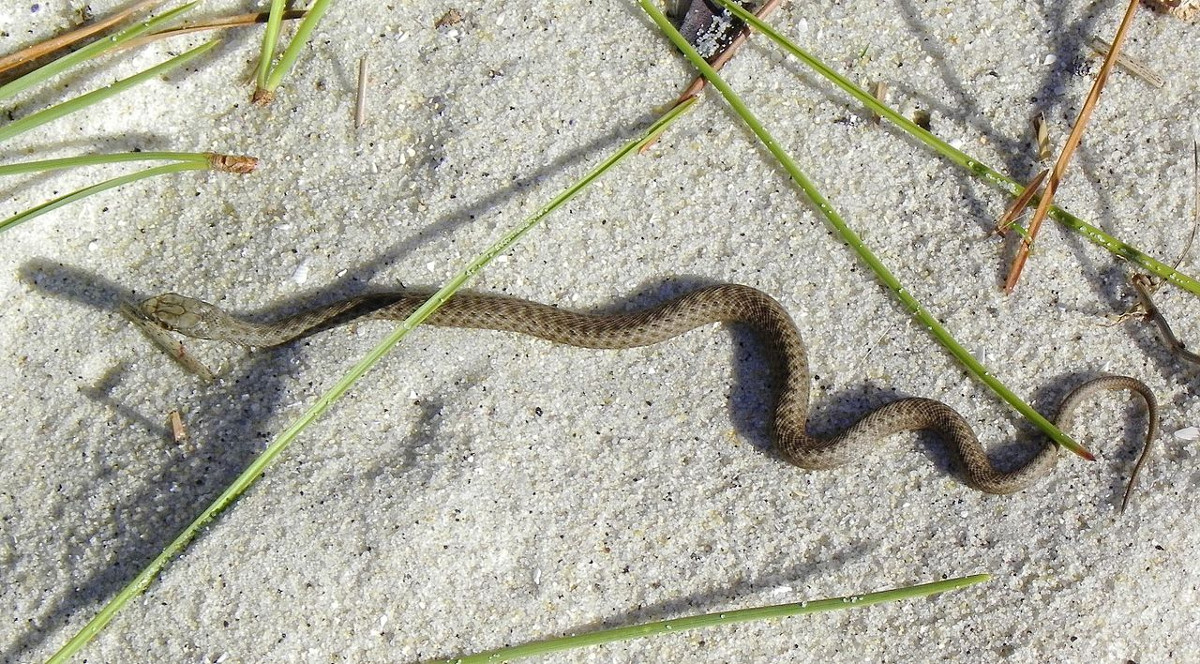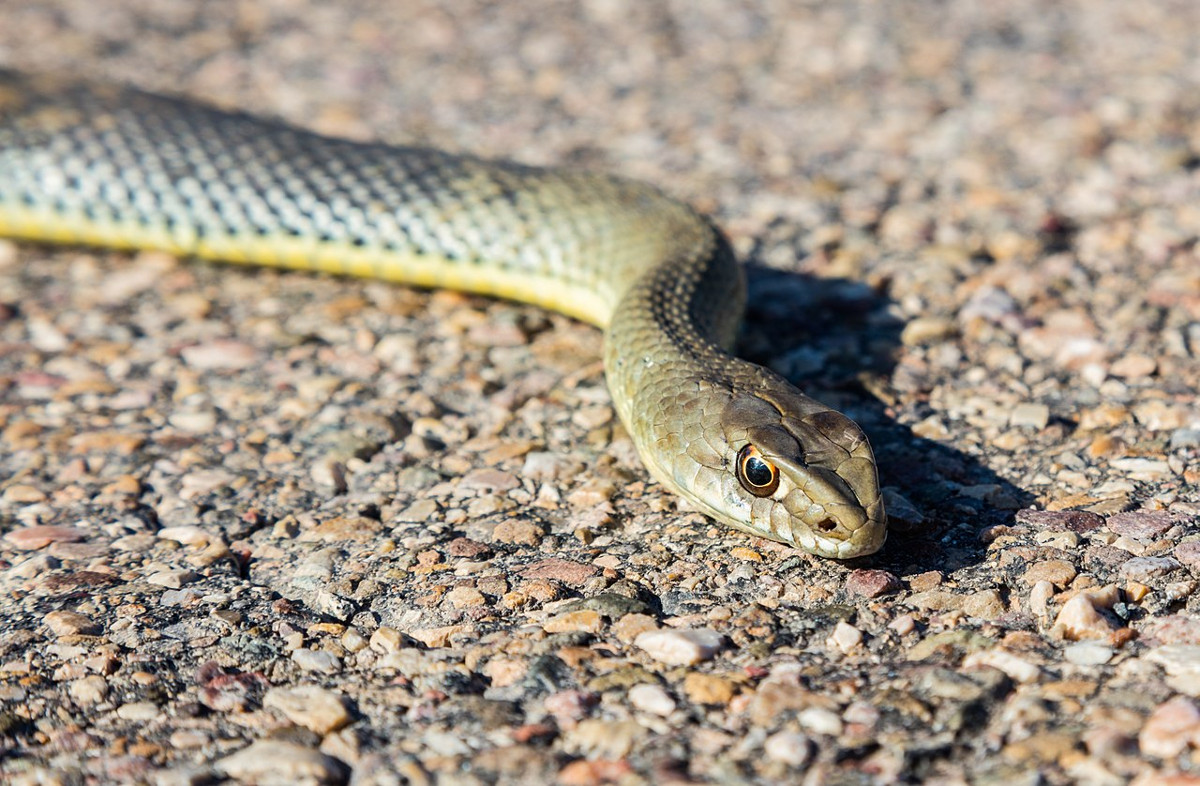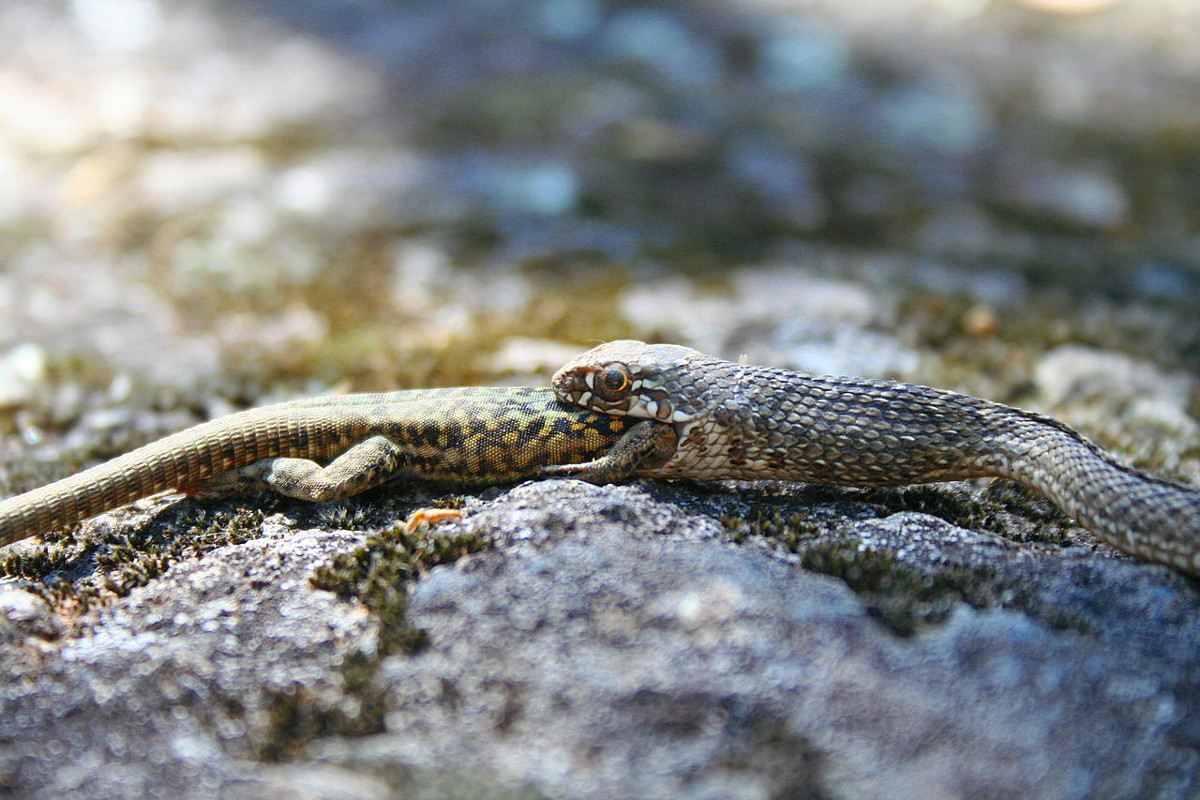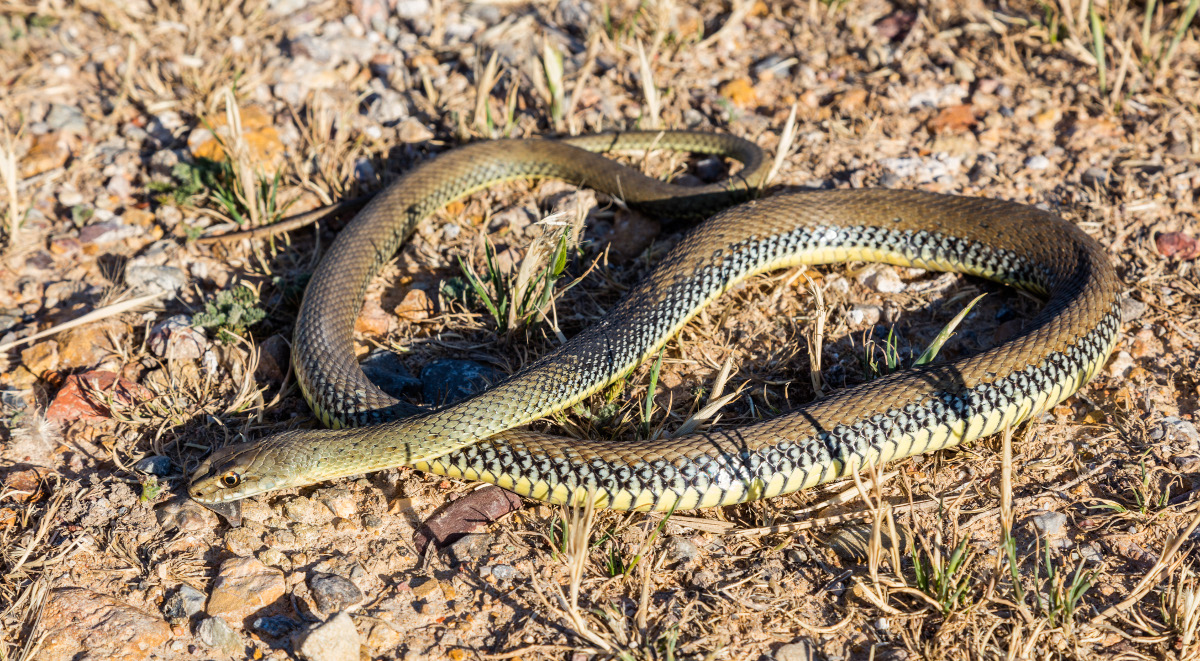
The animal kingdom of snakes is quite rich in terms of species of these reptiles. However, sometimes we find some specimens that catch our attention. Such is the case with the bastard snake.
It is an animal that we have present in Spain and also in part of Europe. If you want to know the bastard snake characteristics, its behavior, where you can find it, what it feeds on or how it reproduces, here you have all the information you need about it.
Bastard Snake Characteristics
The bastard snake, also known as bastard snake, or Montpellier snake, scientific name Malpolon Monspessulanus, is actually a poisonous reptile, but not dangerous to humans. It can easily reach 2 meters in length, although there are specimens that have exceeded that figure by half a meter. For its part, it weighs 3 kilos.
The most characteristic of this snake are his teeth, since he has them in the back of his upper jaw (in the upper jaw). In addition, its head differs from other reptiles, because it has large eyes and scales that protrude above them like eyebrows, which gives the animal a very penetrating and curious look. It is elongated in shape and has a pointed snout.
As for its body, it is quite elongated, with a thin and very long tail. The scales covering the body of the snake are divided into two: on the one hand - 8 supralabial scales, on the other - up to 189 ventral scales. These are smooth, with some small arches, which form between 17-18 rows in the center of the body. Its coloring is usually uniform and it ranges from olive green to brown with some very characteristic black spots. However, in the belly, the color is light yellow while the front area is dull gray.
The behavior of the bastard snake

The bastard snake can be described as active, fast and aggressive. Unlike other reptiles, in this case it is diurnal in habit and, despite its weight and length, it can move very quickly, moving at high speed.
Despite the fact that it is not a climber, in the summer months it does tend to climb the trees while, from October to March, it hibernates, which makes it look for an area where it will not be disturbed to spend the winter. colder months.
If the snake is threatened, or enters its space, it is capable of standing up like other snakes (cobras) so that its size intimidates others and they move away. In addition, it emits a hissing sound to make the enemy give up. However, if he does not do so, or senses that he must attack, he will do so without hesitating for a moment. Thanks to its fangs that ejaculate venom, it can easily kill its prey. In the case of man, due to the location of those fangs, since his mouth is not too big, he does not bite with them, but there are cases in which it has happened. Fortunately, the poison is not too dangerous for human life.
[related url=»https://infoanimales.net/snakes/flying-snake/»]
In case you are bitten by a bastard snake, among the symptoms that are experienced are local inflammation (in the area where the bite has occurred), pain, possibility of edema (fluid accumulation), or lymphangitis (inflammation of the lymphatic channels), neurological symptoms such as tingling , numbness, trouble swallowing or breathing, and even mild paralysis. All these symptoms are temporary. And it is that, despite the fact that the venom is not very toxic, it does require medical treatment to cure the problems that this snake can cause.
Habitat
The bastard snake is not known for sure what its origin is, but according to studies of its genetics it seems that experts agree that it originates from the Maghreb area. From there, he emigrated to Europe, where he is now well established in the Iberian Peninsula (except for the upper western part of Spain), and by part of France.
In the case of Spain, where it is most present is the Mediterranean area. It likes to live both in the coastal dunes and in the mountains, especially in scrub areas, mixed pine forests, riverbanks or in areas where there are places to take refuge, be it hedges, walls, etc.
[related url=»https://infoanimales.net/snakes/velvet-snake/»]
Like other snake species, the bastard snake seeks warmth, but it has been able to adapt to living up to 1.500 meters of altitude. Only in Cantabria and the Pyrenees do they lack this reptile.
Bastard snake feeding

The bastard snake's diet consists of small reptiles, such as lizards, geckos, mice, rabbits, birds... In fact, she is capable of facing large animals for her.
It has a peculiar way of hunting and that is that, instead of doing it like other reptiles, what it does is hold its prey in its mouth so that it can bite it with its fangs. Then he releases it and waits for the poison to take effect on the animal to swallow it immediately. For this reason, it is very important for her to control her victim for a few seconds so that the fangs can reach a part of her where they can be stuck so that the poison enters her.
The reproduction of the bastard snake

A bastard snake reaches sexual maturity when it is the ideal size, with females being considerably larger than males. Copulation occurs between the months of April-May while laying occurs in the month of June. At that time the female is capable of laying up to 18 eggs (normally they are between 4 and 18). Hatching will take place between August and September. These have an elongated shape and measure about 4 centimeters in diameter. It will place them in warm areas so that they maintain the temperature.
All the young when they are born measure approximately 25 centimeters. Like their parents, they are very aggressive and agile reptiles, and they will not hesitate to attack their prey to feed on it.